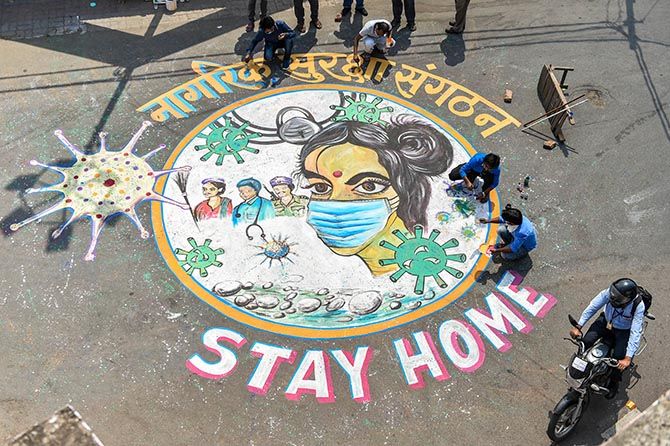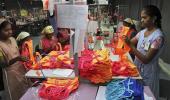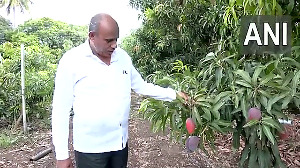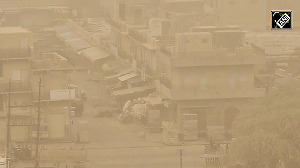'The steady poverty reduction achieved over the last three decades could be largely reversed in this one financial year with hundreds of millions sliding below the red line,' warns Devangshu Datta.

J B S Haldane, scientist extraordinaire and Communist ideologue, was a courageous soldier.
In World War I, he served in the trenches of France and specialised as a frontline demolitions expert, blowing up enemy pillboxes and trenches.
He also studied chemical warfare, experimenting upon himself with toxic gases.
Despite his politics, his scientific eminence led to him being made a member of a dozen scientific committees driving military research in World War II.
One of his more controversial stances was the advocacy of chemical warfare, in preference to high explosives.
His logic was poison gas did not destroy infrastructure even as it killed or incapacitated.
After a successful gas attack, it was possible to walk in, remove the corpses and use the infrastructure.
According to him, gas also caused fewer fatalities than high-explosive bombardment, which may have been the case, given the 1940s technology.
Neither side used chemical weapons in World War II for fear of retaliation.
But the concept of a weapon that kills without destroying infrastructure was central to the creation of the so-called neutron bomb.
The neutron bomb is a high-radiation nuclear weapon, with relatively low explosive power.
It is designed to kill anybody within a certain radius through radiation, while causing only localised damage to infrastructure.
Such a weapon could be used against an invasion force, by a defender who exploded it within its own territory.
Advocates of bioweapons have often made arguments echoing Haldane.
If a deadly disease can be 'safely' deployed, it could wipe out entire enemy populations, without damaging infrastructure.
Again, in theory, such a bioweapon could have an antidote, or vaccine, which could be administered to 'friendlies', keeping them safe.
Nobody has ever demonstrated such a 'safe' weapon.
It can't be done with current state-of-the-art.
Modern technology can create highly lethal chemical weapons, and bioengineer deadly diseases.
But it is far harder to create effective antidotes.
Bioweapons and chemical weapons remain banned, though many nations, including India, are rumoured to have stockpiles.
COVID-19 is not an especially deadly virus.
It has a much lower fatality rate and is less infectious than several strains of anthrax and botulism that are known to have been weaponised.
There is very strong expert consensus that it wasn't designed as a bioweapon, although some scientists reckon it may have escaped from a lab.
And, of course, there's no antidote.
The pandemic has been an object lesson in that it has brought the global economy to its knees without harming physical infrastructure.
Although there have been many studies about the pros and cons and moral consequences of using bioweapons, there was never much focus on economic consequences.
Those tended to be dismissed by hand-waving -- if the infrastructure is ok, well everything else can surely be sorted out.
On closer examination, this isn't as easy as it was assumed to be.
How do you reorganise an economy that's been put on hold for months?
Rebuilding infrastructure is something the world is inured to, since it happens after every war, tsunami, forest fire or flood.
Finding ways to work normally in the shadow of an infectious disease is new territory, especially on a global scale.
The Indian experience will be gut-wrenching.
The informal economy has now been destroyed by the coronavirus after being hit hard by demonetisation and the botched goods and services tax rollout.
An estimated unemployment rate of 23 per cent is highly conservative.
The steady poverty reduction achieved over the last three decades could be largely reversed in this one financial year with hundreds of millions sliding below the red line.
In the aftermath of the lockdown, entrepreneurs will need liquidity and loan forgiveness.
The millions now sliding into poverty will need direct transfers of money and food.
Labour-intensive industries will have to be restarted to generate employment, and these sectors will need expert advice, as well as fiscal aid and technological help, to minimise infection risks.
This is the greatest test the Republic has faced since Partition and in many ways, it presents far more complicated problems than Partition did.
It is heartening to see the challenge being accepted with innovative measures like nine minutes of lamp lighting at 9 pm.












